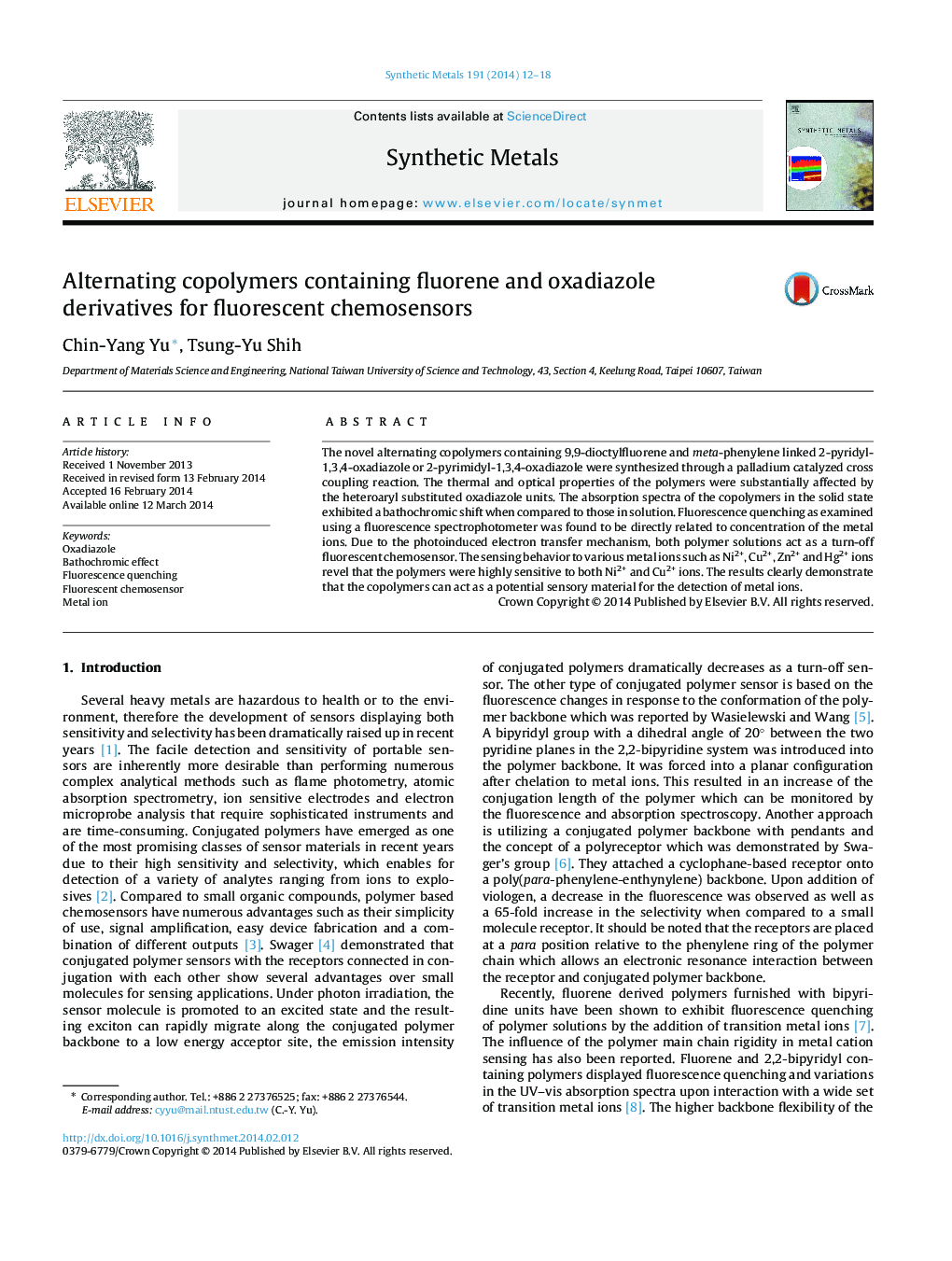| کد مقاله | کد نشریه | سال انتشار | مقاله انگلیسی | نسخه تمام متن |
|---|---|---|---|---|
| 1440892 | 1509386 | 2014 | 7 صفحه PDF | دانلود رایگان |
• Polymers containing fluorene and oxadiazole units have been prepared.
• Polymer solutions act as the turn-off fluorescent chemosensor.
• The interruption of conjugation length leads to high selectivity of metal ions.
• Copolymers act as the potential sensory material for the detection of metal ions.
The novel alternating copolymers containing 9,9-dioctylfluorene and meta-phenylene linked 2-pyridyl-1,3,4-oxadiazole or 2-pyrimidyl-1,3,4-oxadiazole were synthesized through a palladium catalyzed cross coupling reaction. The thermal and optical properties of the polymers were substantially affected by the heteroaryl substituted oxadiazole units. The absorption spectra of the copolymers in the solid state exhibited a bathochromic shift when compared to those in solution. Fluorescence quenching as examined using a fluorescence spectrophotometer was found to be directly related to concentration of the metal ions. Due to the photoinduced electron transfer mechanism, both polymer solutions act as a turn-off fluorescent chemosensor. The sensing behavior to various metal ions such as Ni2+, Cu2+, Zn2+ and Hg2+ ions revel that the polymers were highly sensitive to both Ni2+ and Cu2+ ions. The results clearly demonstrate that the copolymers can act as a potential sensory material for the detection of metal ions.
The alternating copolymers containing 9,9-dioctylfluorene and meta-phenylene linked 2-pyridyl-1,3,4-oxadiazole and 2-pyrimidyl-1,3,4-oxadiazole have been synthesized through palladium catalyzed cross coupling reaction. The sensing behaviors reveal that the polymers are highly sensitive to Ni2+ and Cu2+ ions.Figure optionsDownload as PowerPoint slide
Journal: Synthetic Metals - Volume 191, May 2014, Pages 12–18
